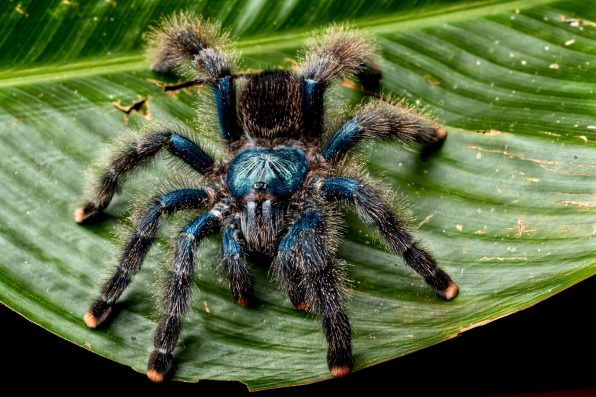Tarantulas Evolved To Have Dense Hair As A Defense Mechanism, Protecting Themselves Against Predatory Army Ants, According To A New Study

Tarantulas are one of nature’s most infamous creatures. Their hairy bodies are repulsive, and the sight of them never fails to send chills down your spine.
But their hairiness actually serves a purpose aside from creeping us out. In a new study, researchers have found evidence that tarantulas evolved to have dense hair covering their bodies as a defense mechanism against predatory army ants.
A team of scientists from Canada, Finland, and the United States conducted a study on how tarantulas interact with other species. For the first time, they found associations between tarantulas and a variety of animals, including snakes, whip spiders, harvestmen, frogs, and toads.
They also reported 63 new cases of partnerships between tarantulas and amphibians across 10 countries.
According to the researchers, the interaction between the tarantulas and other species is mutually beneficial. Tarantulas, frogs, and toads can coexist peacefully. A frog will live near or inside a tarantula’s home and act as a bodyguard.
“Apparently, the frogs and toads that live within the retreats of tarantulas benefit from the shelter and protection against their predators. In turn, they feed on insects that could be harmful to the spider, its eggs, and its juveniles. It seems that tarantulas might not be as scary and threatening as their reputation suggests,” said Alireza Zamani, the first author of the study and a researcher from the University of Turku in Finland.
The researchers also identified a complex relationship between tarantulas and army ants. During their observations, they noted that the tarantulas allowed the ants to enter their burrows, gather food remains, and clean their homes.
For the most part, the army ants ignored the adult tarantulas and their young, which was odd because they are known to feed on spiders.
Only a few ants tried to attack, but their attempts were thwarted due to the stiff hairs covering the spider’s legs. Based on these observations, the researchers hypothesized that the hairy legs and bodies of some tarantulas protect them from predatory ants.

mgkuijpers – stock.adobe.com – illustrative purposes only, not the actual tarantula
“The dense hair covering the tarantula’s body makes it difficult for the ants to bite or sting the spider. Therefore, we believe that the hairiness may have evolved as a defense mechanism. This hypothesis is supported by findings that many burrowing New World tarantulas cover their egg sacs with urticating hairs,” Zamani said.
When the tarantulas release their barbed hairs, they deter and sometimes even kill their attackers. The spiders can also prevent ants from attacking their eggs by covering egg sacs with these hairs. So, species with thinner body hair are more vulnerable to attacks from ants.
In addition, the research team uncovered some early evidence suggesting that tarantulas can emit chemical secretions as a defense strategy. It may explain why dogs and cats move away quickly after sniffing a tarantula.
More research is needed to confirm these findings, but overall, this study has helped clarify some of the behaviors of tarantulas.
The study was published in the Journal of Natural History.
Sign up for Chip Chick’s newsletter and get stories like this delivered to your inbox.
More About:Animals





